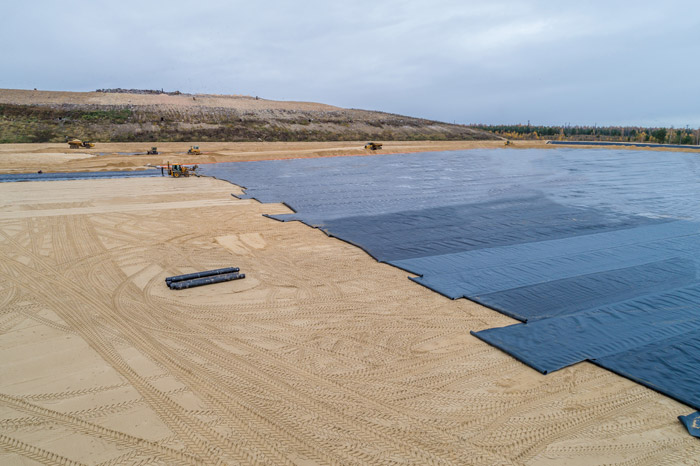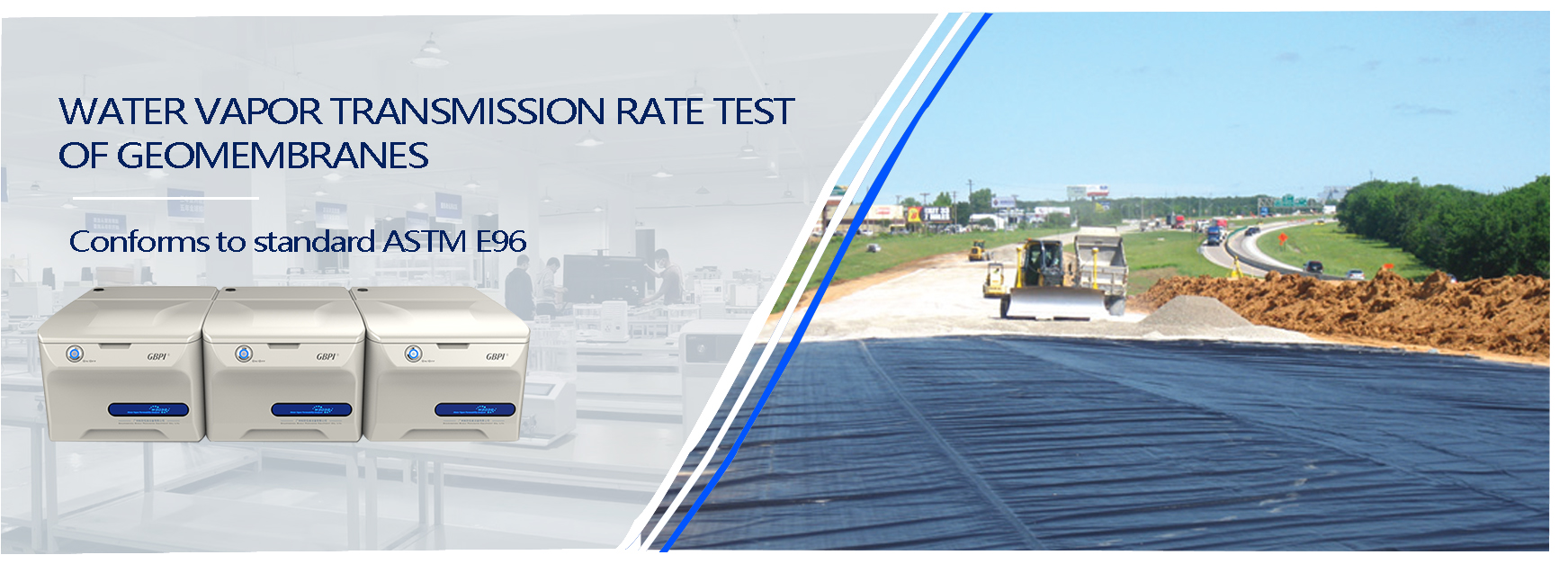Geomembranes are defined by EN ISO 10318 as: Geomembranes are waterproof and barrier type materials made of polymers as the basic raw material. Geomembranes are mainly classified into: low density polyethylene (LDPE) geomembranes, high density polyethylene (HDPE) geomembranes and EVA geomembranes. Geomembrane is a geotechnical impermeable material made of plastic film as an impermeable base material and compounded with nonwoven fabric.

Physical properties
Geomembrane is a geotechnical impermeable material made of plastic film as an impermeable base material and compounded with nonwoven fabric. Plastic films used for seepage control at home and abroad mainly include polyvinyl chloride (PVC) and polyethylene (PE), EVA (ethylene/vinyl acetate copolymer), and ECB (ethylene vinyl acetate modified asphalt blended geomembrane) designed for tunnel applications, which are polymeric chemically flexible materials with low specific gravity, high extensibility, high adaptability to deformation, corrosion resistance, low temperature resistance, and good frost resistance.
The main physical properties of geomembranes in the as-manufactured state are:
Thickness (smooth sheet, textured, asperity height)
Density
Melt flow index
Mass per unit area (weight)
Vapor transmission (water and solvent).(FR:WIKI)
ApplicationsGeomembranes with a general film thickness of 0.5-3.0mm are called waterproof sheets or waterproof rolls. Warp-knitted composite reinforced waterproof geotextile has superior water barrier, durability and protection. It is mainly used in tunnels (subway, undersea, highway, railroad), reservoirs, artificial lakes, fish farms, water treatment sites, underground facilities, garbage burial sites, waste liquid and liquid storage, biogas ponds, environmental protection and other projects. Seepage control application Geomembrane has a wide range of seepage control applications, which can be classified as follows.
(A) embankment, dam, gate seepage control
1. earth and stone dam surface impermeability.
2. earth and stone dam body seepage control.
3. seepage control of dam base cut-off wall
4 dams, gates upstream cover.
5. Concrete dam crack seepage prevention; 6.
6. Air-filled membrane dams.
7. Pile ink cofferdam.
(B) reservoir seepage control
1. drinking water pools.
2. fish ponds shrimp ponds.
3. Salt farm brine pools.
4. Storage pools of various chemical solutions.
5. Cesspools, liquid waste storage pools.
6. Oil storage pools.
7 reservoirs, tailings storage area impermeable.
(C) water, oil and liquid channels
1. water transfer canals.
2 drainage river.
3. Oil transport channels.
4. hydraulic transport of various waste channels.
(D) solid waste dump impermeable
1 solid waste pile back wall and pit bottom lining impermeable.
2. solid waste yard capping to avoid the spread of toxic and odorous gases.
(E) Other
1 roof impermeability.
2. building basements, underground tunnels, underground warehouses, underground garage moisture control.
3. sealing of expansive soils to prevent water intrusion.
4. Frozen soils to cut off the source of frost and swelling.
Note: The application of vertical paving membrane seepage control technology in embankment dams to do seepage control curtain or slurry masonry engineering seepage control technology can also be applied to projects such as crossings, storage pools, swimming pools and sewage treatment ponds.
Geomembranes test items are:
Puncture test, compression test, tensile force test, tear test, creep test, melt flow index test , water vapor transmission rate test , etc.

Geomembrane permeability testing program
A roadway is a major highway for over 1,550 miles. The highway is prone to undulations in the sidewalk within 7 miles of the highway due to the presence of swelling clay under the roadway. As the moisture content of the clay increases, the clay tends to swell, which results in uneven expansion and contraction. The moisture content of the area changes frequently depending on weather conditions, and the situation is further complicated in the summer by drastic temperature changes between 18°C and 43°C in winter. These undulations have a negative impact on the pavement and, as a result, several repairs have been required in the area since the construction of the period.
A long-term solution was now sought to maintain the problematic soil. The final choice was to use a geomembrane with a strong moisture barrier to control the swelling of the clay roadbed. The geomembrane minimizes the chance of significant moisture changes in the pavement bed, so the geomembrane needs to be tested for water barrier before it is put into service
Test procedure
(1) Cut 3 specimens from the surface of the geomembrane sample with the sampler.
(2) Add a certain amount of distilled water to each of the 3 permeable cups and clamp the 3 specimens in each of the 3 permeable cups to ensure a good seal between the specimens and the permeable cups.
(3) Place the moisture-permeable cups with clamped specimens on the moisture-permeable cup holder in the test chamber of the equipment respectively, and close the door of the test chamber.
(4) In the system software part, set the specimen thickness, test temperature and humidity (38℃, 90% RH), test time interval and other parameters information, click the test option, the test begins. Equipment automatically according to the set time interval test the weight of the moisture permeability cup, according to the test data, calculate and display the water vapor transmission rate of the specimen and other test results.
Test results
The test results of the three specimens measured in this test were 0.11 g/(m2-24h), 0.67 g/(m2-24h), and 0.09 g/(m2-24h), respectively. The water vapor transmission rate of the waterproof breathable membrane sample used in this geomembrane was taken as the average of the three specimen test results of 0.29 g/(m2-24h). Therefore the geomembrane made of flexible sheet of this polymer is a low permeability barrier.
The waterproof permeable membrane is an important component of geomembranes, which has the characteristic of preventing urine water leakage and has an important impact on the water barrier of geomembrane use. The water vapor permeability performance of a geomembrane sample was verified by testing the water vapor transmission rate of the sample. Understanding the permeation requirements of an application and specifying the best geomembrane can be challenging as different geomembranes have different failure mechanisms. It is recommended to look at the overall application and investigate the permeability performance, and life expectancy of the geomembrane and any other factors that will affect the application prior to selection.

 info@gbtest.cn
info@gbtest.cn



 en
en ru
ru es
es ar
ar
